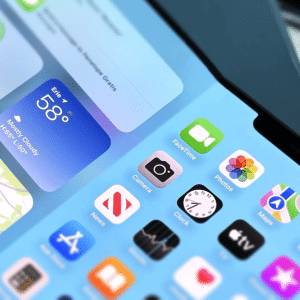To use Universal Control, your devices must meet specific requirements: a Mac running macOS Monterey 12.3 or later, an iPad running iPadOS 15.4 or later, and both signed into the same Apple ID with two-factor authentication enabled. Devices must be within 30 feet, with Wi-Fi, Bluetooth, and Handoff turned on, and they cannot share a cellular or internet connection (e.g., via Personal Hotspot). Compatible devices include MacBook Pro (2016 and later), iPad Pro (all models), and iPad (6th generation and later), among others.
On your Mac, go to System Settings (or System Preferences on older macOS versions), select Displays, and click Advanced (if using macOS Ventura or later). Enable “Allow your pointer and keyboard to move between any nearby Mac or iPad” and “Push through the edge of a display to connect a nearby Mac or iPad.” On your iPad, navigate to Settings > General > AirPlay & Handoff, and turn on “Cursor and Keyboard.” These settings are often enabled by default, but checking them ensures proper setup, as noted by Apple Support.
Connecting Devices
Place your Mac and iPad within a few feet of each other, ensuring both are awake and unlocked. Move your Mac’s mouse or trackpad cursor to the edge of the screen toward the iPad’s physical location. A visual cue, like a bar or border, appears on the iPad’s screen as the cursor “pushes through.” Continue moving the cursor until it fully transitions to the iPad, where it transforms into a dot mimicking a finger’s touchpoint. If the connection fails, manually link devices by clicking the Displays menu in your Mac’s Control Center and selecting your iPad under “Link Keyboard and Mouse.” This seamless connection process, praised on X for its “magical” feel, makes multi-device workflows intuitive.
Arranging Displays for Precision
To optimize cursor movement, arrange your virtual displays to match your physical setup. On your Mac, go to System Settings > Displays > Arrange, and drag the iPad’s display icon to align with its physical position—left, right, or below your Mac’s screen. This ensures the cursor moves naturally between devices. For example, if your iPad is to the right, dragging the cursor off the right edge of your Mac’s screen should transition smoothly to the iPad. MacRumors notes that precise arrangement prevents clunky cursor jumps, enhancing usability.
Using Universal Control
Once connected, Universal Control lets you control your iPad with your Mac’s keyboard, mouse, or trackpad. On the iPad, the cursor behaves like a finger, supporting clicks, taps, and most trackpad gestures, such as swiping to open the Dock or go Home. For instance, move the cursor past the iPad’s screen bottom to access the Dock, or use a three-finger swipe to switch apps, as detailed by Apple Support. You can type in iPad apps like Notes or Safari using your Mac’s keyboard, switching to the iPad’s onscreen keyboard by tapping its keyboard icon.
A standout feature is drag-and-drop functionality. Sketch on your iPad with an Apple Pencil, then drag the drawing into a Mac app like Keynote. Move photos from your Mac to Messages on your iPad, or drag files to the iPad’s Files app for use in compatible apps. If a prohibitory symbol appears, the file can’t be dropped in that location; instead, use Universal Clipboard (Command-C and Command-V) to copy and paste. The Verge highlights this as a game-changer for creative workflows, like transferring Procreate artwork to a Mac presentation.
Why It Matters
Universal Control simplifies multi-device setups, reducing desk clutter by eliminating the need for multiple keyboards or mice. It’s ideal for professionals juggling tasks across devices—say, editing a document on a Mac while referencing notes on an iPad. The feature’s no-setup design, enabled by default on compatible systems, makes it accessible even for casual users. Posts on X, like those from @9to5mac, praise its seamless integration, noting how it transforms workflows by letting users “jump” between devices effortlessly. However, it’s limited to Macs and iPads; iPhones are not supported, requiring iPhone Mirroring instead.
The practical impact is significant. For instance, dragging a file from a Mac’s Finder to an iPad’s Files app streamlines project management, while using a single keyboard for both devices speeds up tasks like responding to emails or editing spreadsheets. Unlike Sidecar, which mirrors or extends a Mac’s display, Universal Control preserves each device’s native apps, offering flexibility for tasks requiring distinct interfaces. This distinction, emphasized by AppleInsider, makes it ideal for users who want to leverage both macOS and iPadOS simultaneously.
Troubleshooting and Tips
If Universal Control doesn’t work, ensure devices meet system requirements and are not sharing an internet connection. Restarting both devices can resolve connection issues, as MacRumors suggests. For automatic reconnections, enable “Automatically reconnect to any nearby Mac or iPad” in the Mac’s Displays settings. To disconnect, put the iPad to sleep or deselect it in the Mac’s Control Center. For advanced customization, tools like BetterTouchTool can add shortcuts for specific actions, as noted by setapp.com, though most users won’t need extra software.
Looking Ahead
Universal Control, now out of beta since May 2022, continues to evolve with macOS and iPadOS updates. As Apple prepares for WWDC 2025, where iOS 19 and macOS 16 will be unveiled, users can expect further refinements to Continuity features like Universal Control. Its integration with Apple’s ecosystem, including iCloud and Handoff, ensures a cohesive experience, making it a cornerstone of multi-device productivity.















